“HAW-W-W-W-W!†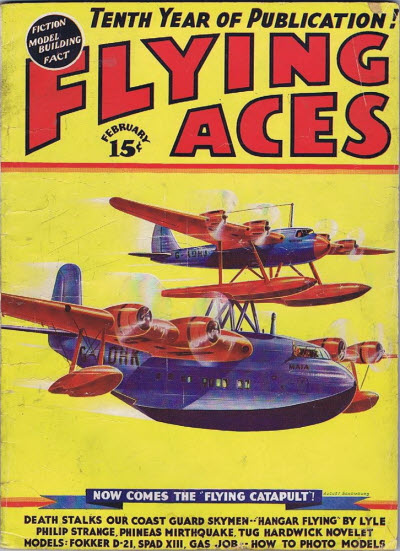 That sound can only mean one thing—that Bachelor of Artifice, Knight of Calamity and an alumnus of Doctor Merlin’s Camelot College for Conjurors is back to vex not only the Germans, but the Americans—the Ninth Pursuit Squadron in particular—as well. Yes it’s the marvel from Boonetown, Iowa himself—Lieutenant Phineas Pinkham!
That sound can only mean one thing—that Bachelor of Artifice, Knight of Calamity and an alumnus of Doctor Merlin’s Camelot College for Conjurors is back to vex not only the Germans, but the Americans—the Ninth Pursuit Squadron in particular—as well. Yes it’s the marvel from Boonetown, Iowa himself—Lieutenant Phineas Pinkham!
All the Allied Brass Hats were frantic. For Hauptmann von Heinz—the “Owl of the Ozoneâ€â€”was raising fifty-seven varieties of Cain along the Western Front, and something had to be done before he perpetrated the fifty-eighth. Yes, it was a job for the famed Pinkham. But when the Boonetown Bam tried to snare the Kraut killer into a dog fight, somebody let the cat out of the bag. And from then on it was cats-as-cats-can!
As a bonus, here’s a great article on author/artist Joe Archibald from April 24th 1927 edition of the The Brooklyn Citizen!
Joe Archibald Sees, Comes and Conquers,
Ascending Ladder of Fame as an Artist
by Murray Rosenberg • The Brooklyn Citizen, Brooklyn, NY • 24 April 1927
|

To show he’s a good sport and a cartoonist Joe Archibald drew this picture of himself—without the use of a mirror. He knows himself too well for that.
|
Red fire of determination in his eyes, grit in his heart and with very little money in his pockets, young Joe Archibald, cartooning pride of a rural, somewhat obscure town in the New Hampshire hills, fared the whole wide-cold-and seemingly unfeeling world, fully determined to set that chily sphere on fire.
His pen, grit and perseverance were his only weapons but artist Joe was young and he felt that they were match enough for any universe.
It took him four years to get a drawing in print.
Year after year of earnest endeavor in contributing to all types of publications failed utterly. Joe began to suspect that he was the only person who knew he was good.
The art editors, cold bloodily refused him interviews, the papers went to press just as well without his work, the magazines returned his efforts without comment, without the checks he so fondly hoped to find. But Joe gamely contained his persevering struggle for recognition, and then the events of a single day wiped out all the heartaches and bitterness of four long years. One of his cartoons was in print.
It was the “Judge” magazine that suffered. It might be reportod here that Joe, claims the distinction of having more rejection slips than any other cartoonist—sufficient to paper the entire ceiling of the museum of Natural History. But his motto is “keep feeding them pictures until they accept one in self-dense.”
The King of Sports
To-day Joe Archibald, who a decade and some odd years ago was a happy go-lucky country schoolboy, obscured from fame in a hinky-dinky rural village in New England, is recognized as a cartoonist de luxe and a national medium in the sports realm, for, as you probably know, Joe makes it his specialty to draw sport cartoons. Yes, he now sits up on the throne of success to look upon the public with a contented smile, for, like every scout, he does his daily good turn by brightening up sport pages with his peppy drawings and offering the fans intimate glimpses into the lives and records of their favorite athletes.
Following the first purchase of his sketch, the rocky road to success grew a bit smoother and life took on a brighter aspect. Other periodicals accepted his contributions and then he sent a cartoon of a prominent sport event of the day to a daily paper. To his surprise and joy the drawing was accepted and published, and thus Joe embarked on the trail that has finally led him to national fame as a sports cartoonist.
From the position of irregular sports department artist on a junk-town paper Joe emigrated to the big city and began again the routine of presenting his drawings to editors, “big-time” men this time. They were accepted from time to time and soon his work attracted the attention of William J. Granger, sports editor of “The Brooklyn Citizen.” He quickly came to the conclusion that young Joe would be a worthy addition to the cartooning staff of the “Citizen,†following which the machinery began functioning to secure his services. Joe finally consented to pen his “John Hancock†to a contract; and now cartoonist Joe, who through his own relentless efforts and unswerving and set ideals has surmounted the steps to success, provides the many thousands of “Citizen†readers each day with vivid picture descriptions of the latest doings in sports.
Backward, Time in Thy Flight!
Let us look back a bit upon some of the past history of Joe Archibald at the time he began his career—a career fraught with thrills and excitement. He first awakened to the content of his latent talent when be completed a picture with chalk on the blackboard of the little red schoolhouse in New Hampshire. It was a drawing of Lincoln and a startling likeness. It was exhibited in the town and made him famous in the “400.” That was the population of the hamlet.
Then came the ascension of the second rung of the ladder to fame when one of his drawings was selected as the best among many competitors by the famous Homer Davenport. This consequently brought him much fame as a cartoonist in the neighboring counties. When 17 years of age he left the Academy of Arts in Chicago to enlist in the navy. While at Newport, R.I., he joined the staff of the “Newport Recruit,” a famous war time publication and it was here that he labored until the kaiser cried “quits.†Then he landed in New York.
There are few sports cartoonists today better equipped to portray athletic events in cartoons than Joe Archibald, who far back as he can recall has been a keen observer and close follower of every phase of sports. His activities as a sports scribe and artist bring him into close touch with some of the brightest luminaries in athletic competition and it usually is Joe Archibald who much wanted interview. This together with the draftsmanship that seems to make his characters actually “live†on the sport pages, have all served to make his reputation an envied on envied among the brotherhood of cartoonists. joe’s cartoons and articles have been syndicated in close to 100 cities from coast to coast. He was at various times affiliated with the Portland, Me., Press Herald, Boston Advertiser and Telegram.
An Artist Athlete
To cap all that has been said, Joe is himself a finished athlete which accounts partly for his deep and sincere interest in each and every one of his cartoons, in an effort to bring it up to the acme of perfection both in the way of reality and mechanical exactness. And together with aforementioned sufficient humor is injected into his drawings to give the reader a reaL moment of enjoyment.
Cartoonist Joe made a serious study of every star whose name is a byword among sport fans and in the vernacular of the modern slangsters. “He knows his onions.†His lot was success for he saw—he came—he conquered.
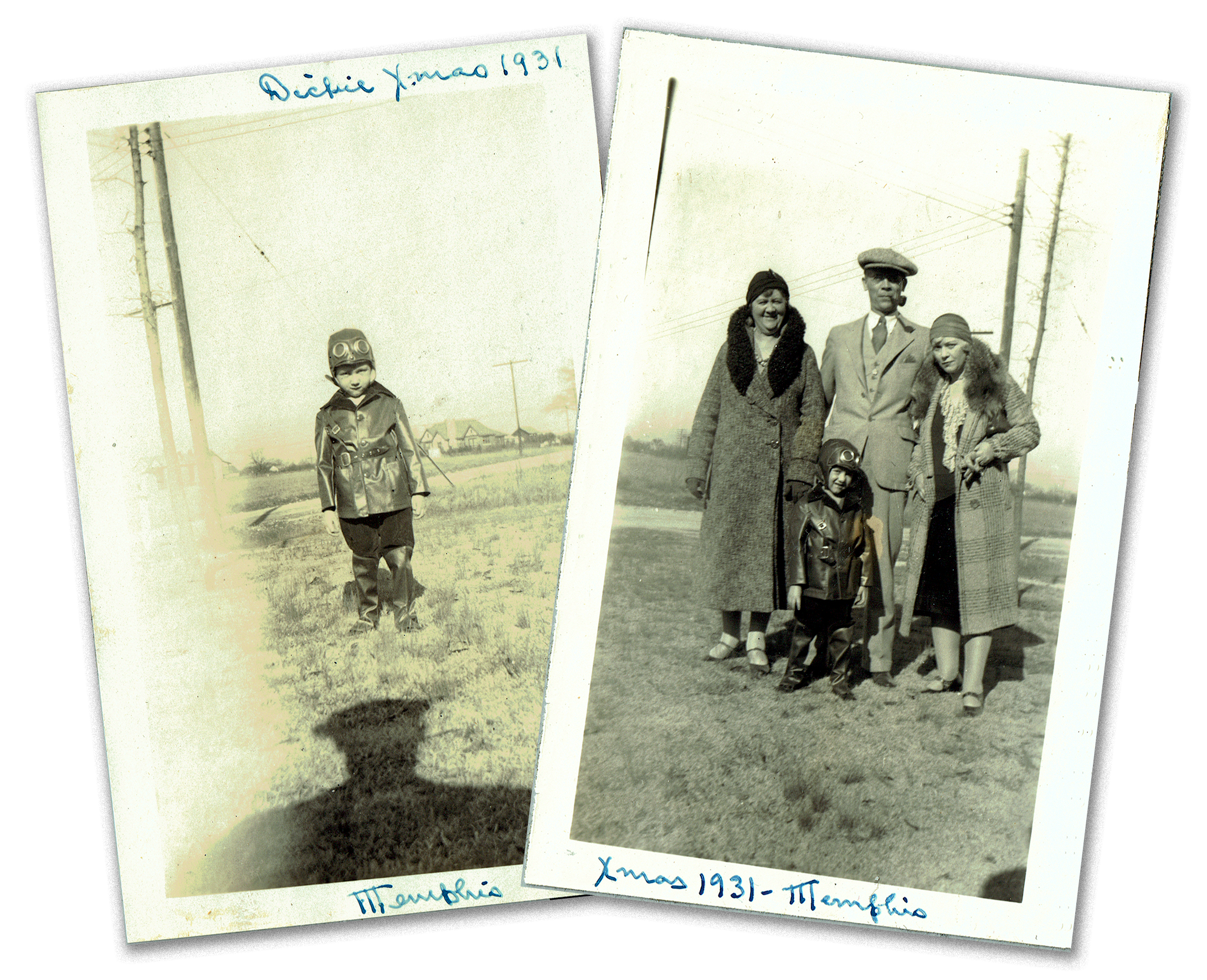





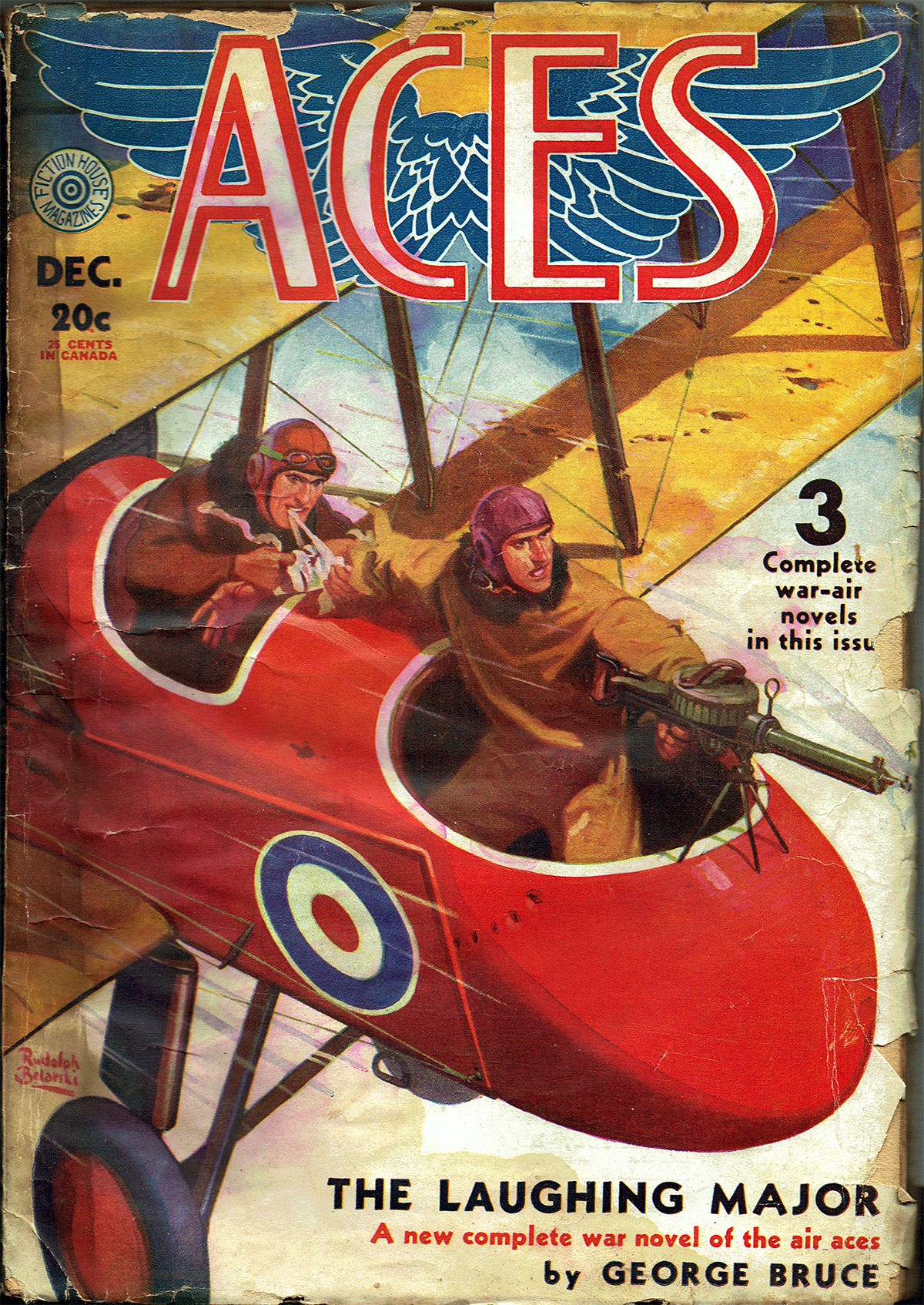
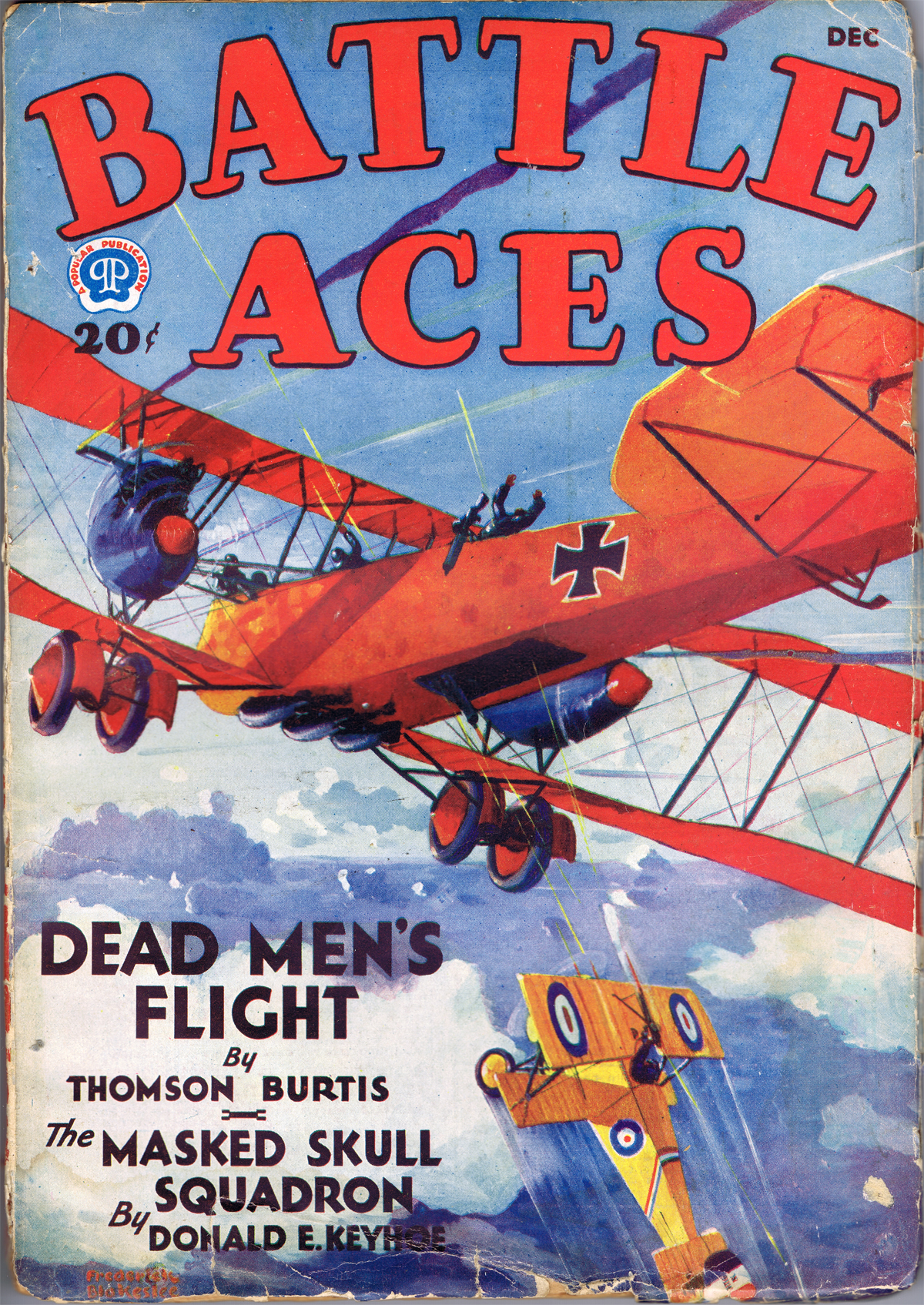
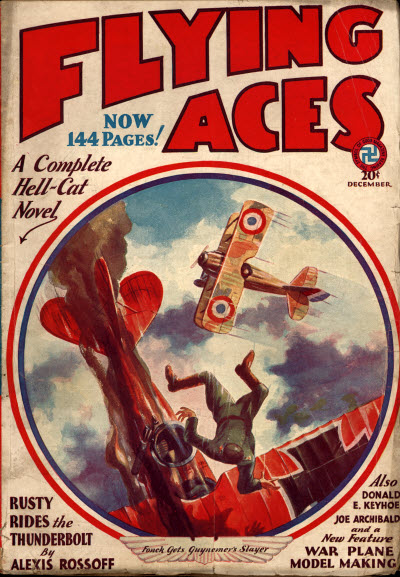

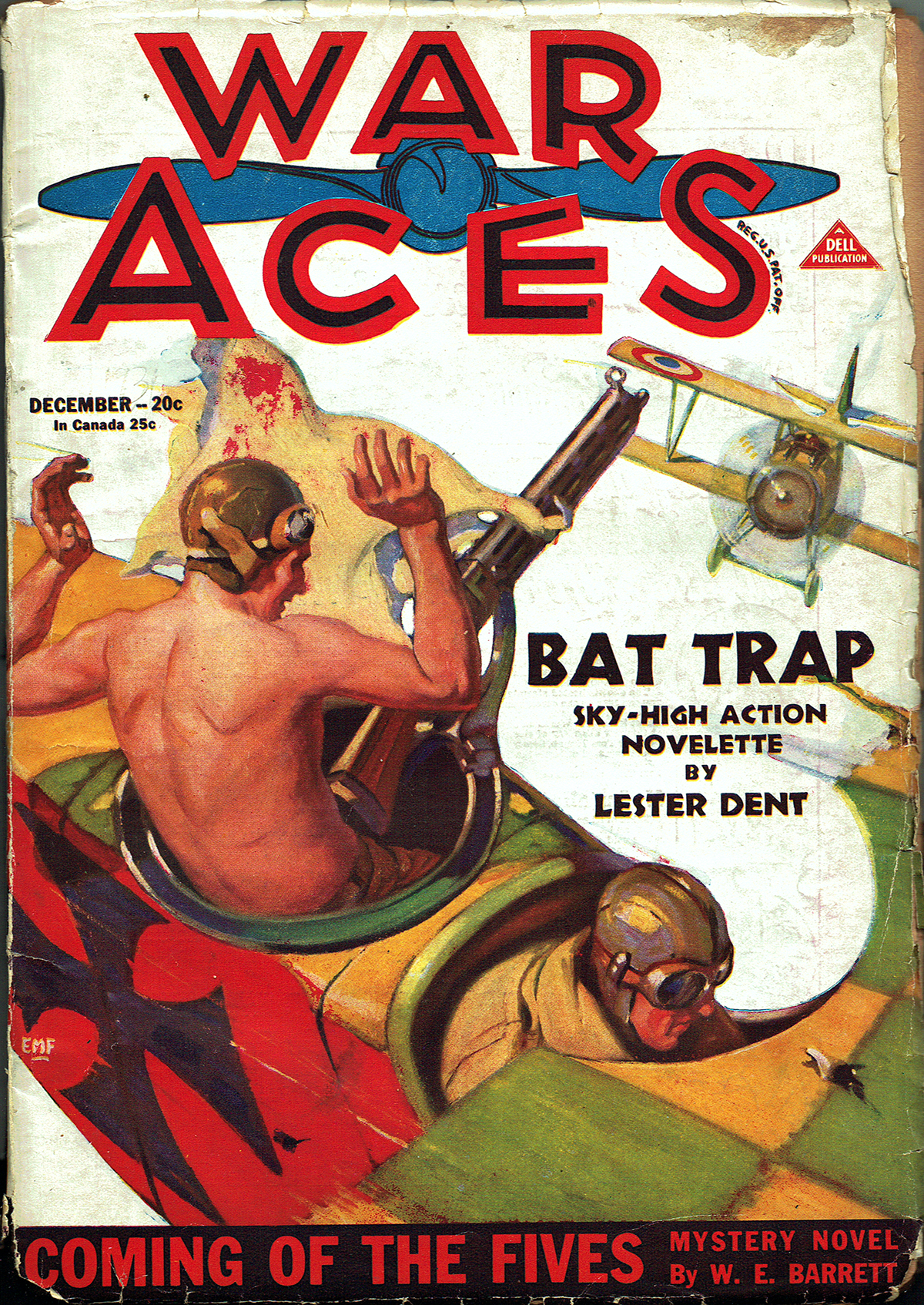
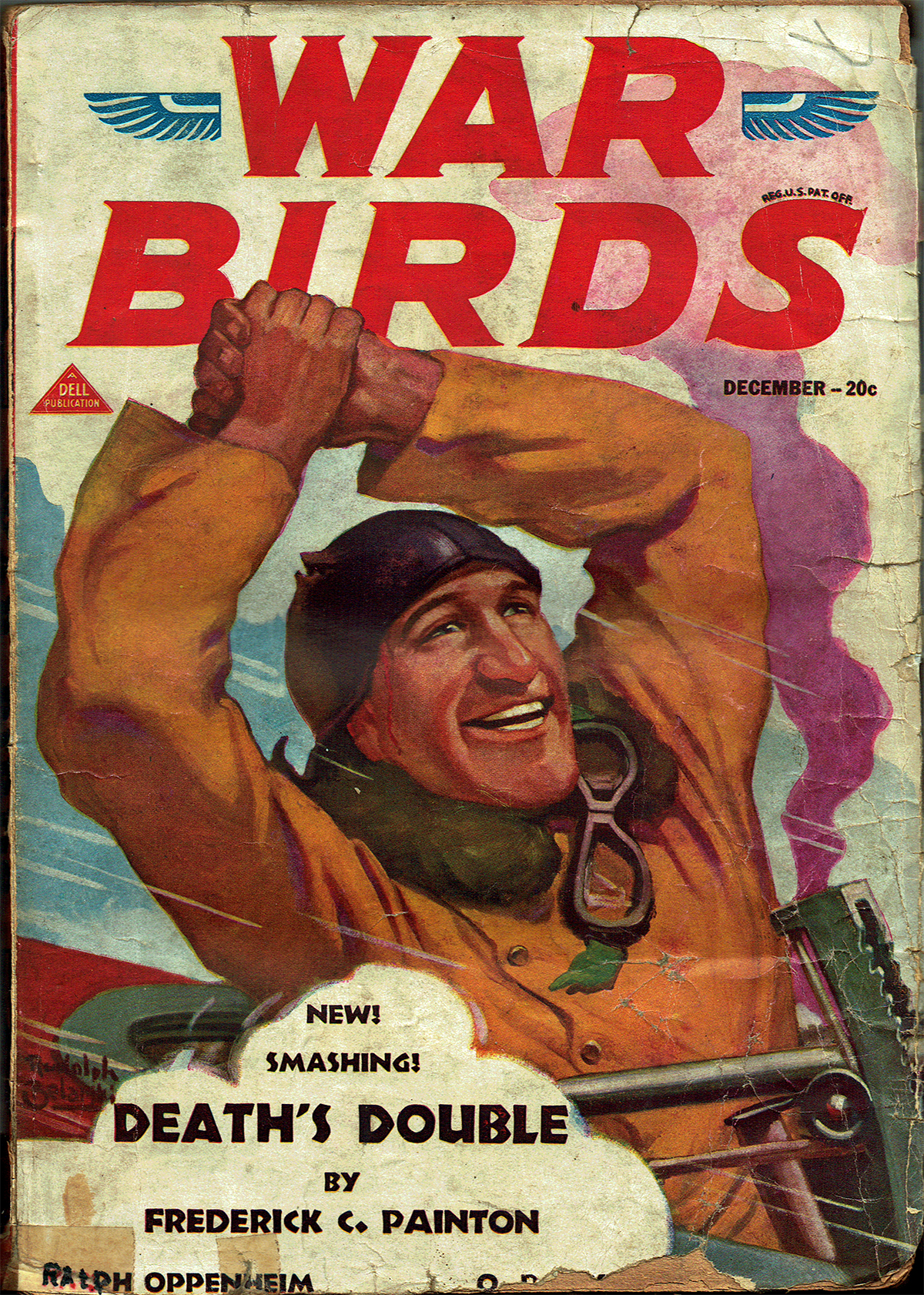
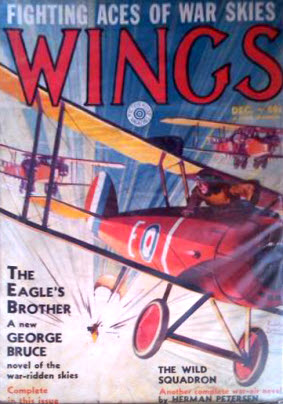
 That sound can only mean one thing—that Bachelor of Artifice, Knight of Calamity and an alumnus of Doctor Merlin’s Camelot College for Conjurors is back to vex not only the Germans, but the Americans—the Ninth Pursuit Squadron in particular—as well. Yes it’s the marvel from Boonetown, Iowa himself—Lieutenant Phineas Pinkham!
That sound can only mean one thing—that Bachelor of Artifice, Knight of Calamity and an alumnus of Doctor Merlin’s Camelot College for Conjurors is back to vex not only the Germans, but the Americans—the Ninth Pursuit Squadron in particular—as well. Yes it’s the marvel from Boonetown, Iowa himself—Lieutenant Phineas Pinkham! 

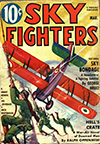

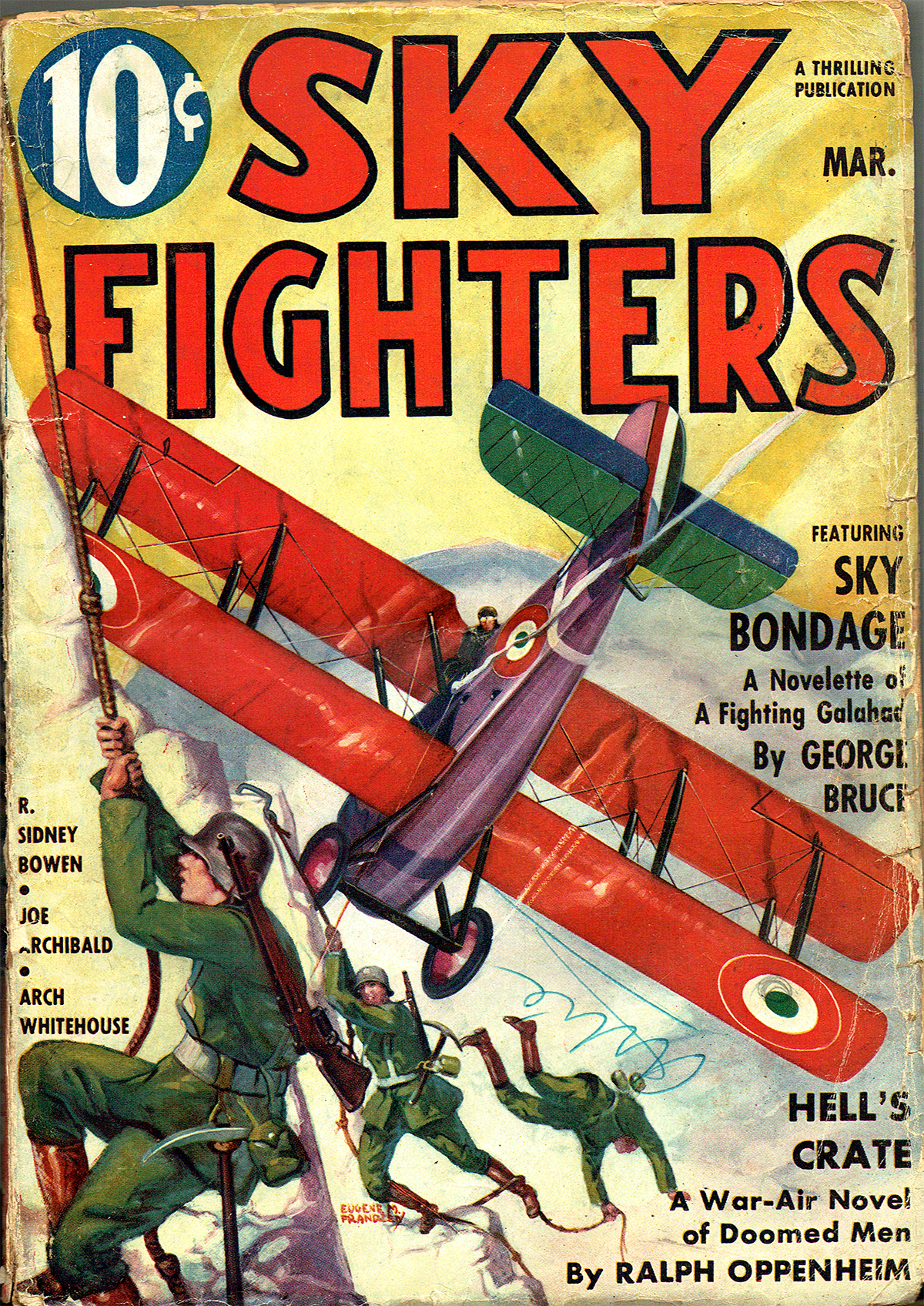
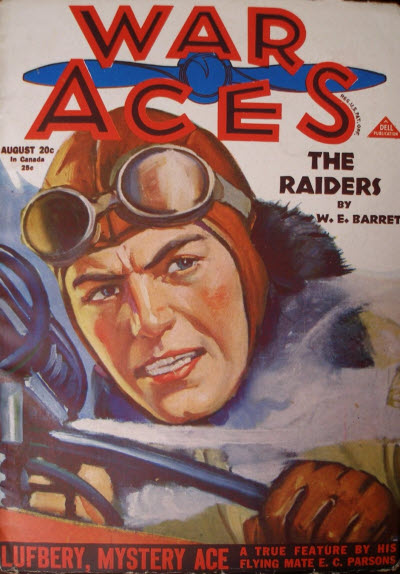 the greatest British offensive of the war got under way. A blazing line of steel whipped across France and into Belgium; from Croiselles to Loos, from Ypres to the Nieuport Canal and to the sea. Under the greatest artillery barrage in the history of the world a grim horde of muddy infantry hit the Hindenburg Line.
the greatest British offensive of the war got under way. A blazing line of steel whipped across France and into Belgium; from Croiselles to Loos, from Ypres to the Nieuport Canal and to the sea. Under the greatest artillery barrage in the history of the world a grim horde of muddy infantry hit the Hindenburg Line.
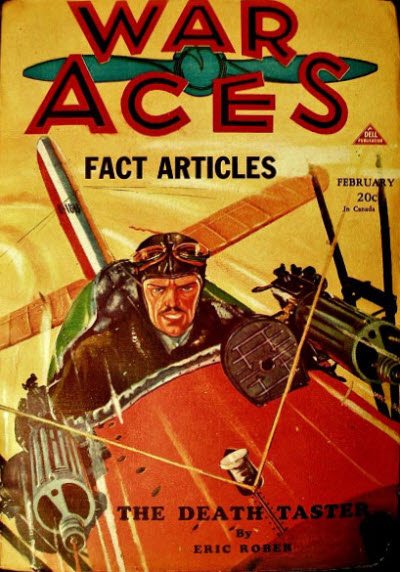 probably the only one of his kind in existence. Accidental aces there were aplenty in that big he war, but there was nothing accidental about Memphis Mason’s accomplishment. It was planned with an attention to detail that would do credit to a brigadier and it was attested by five of the finest fighters in the R.A.F. Those signatures are at the root of Mason’s secret sorrow to-day. At the foot of a square sheet of note-paper they bear flourishing witness to the fact that the signers witnessed the bringing down of five German planes by one Memphis Mason. Not one of those signers would have lied for anyone. They were officers and gentlemen and they saw what they said they saw. Yet, strangely enough, Memphis Mason never reached France. Therein lies a tale; one of the oddest tales to come out of the war and one that has never been told until this telling.
probably the only one of his kind in existence. Accidental aces there were aplenty in that big he war, but there was nothing accidental about Memphis Mason’s accomplishment. It was planned with an attention to detail that would do credit to a brigadier and it was attested by five of the finest fighters in the R.A.F. Those signatures are at the root of Mason’s secret sorrow to-day. At the foot of a square sheet of note-paper they bear flourishing witness to the fact that the signers witnessed the bringing down of five German planes by one Memphis Mason. Not one of those signers would have lied for anyone. They were officers and gentlemen and they saw what they said they saw. Yet, strangely enough, Memphis Mason never reached France. Therein lies a tale; one of the oddest tales to come out of the war and one that has never been told until this telling.
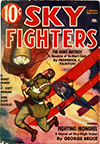

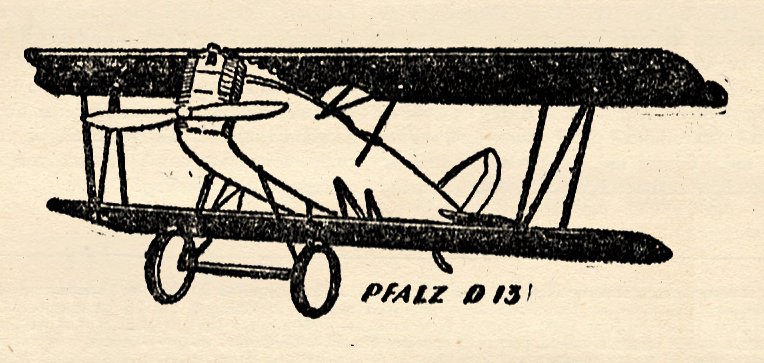

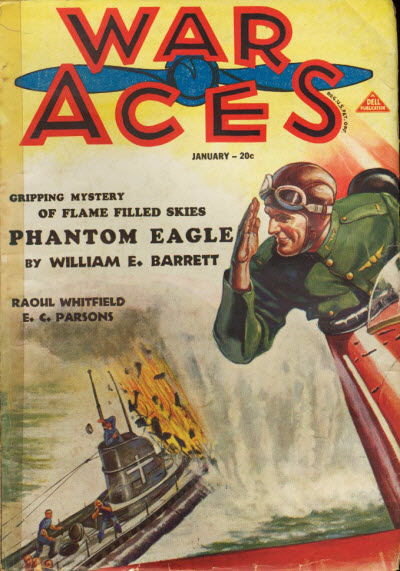 in the January 1932 War Aces—”Unless we misjudge the reading taste of our readers we feel that “Phantom Eagle,†by W. E. Barrett is about the ideal story. It has that balance of action, mystery and fantasy that gives you a new set of thrills. Obviously, it was too bizarre to be entirely fiction, so we asked the author about it. As is the case with most of Barrett’s fiction, it is based on some true incident. Here is his letter:
in the January 1932 War Aces—”Unless we misjudge the reading taste of our readers we feel that “Phantom Eagle,†by W. E. Barrett is about the ideal story. It has that balance of action, mystery and fantasy that gives you a new set of thrills. Obviously, it was too bizarre to be entirely fiction, so we asked the author about it. As is the case with most of Barrett’s fiction, it is based on some true incident. Here is his letter:

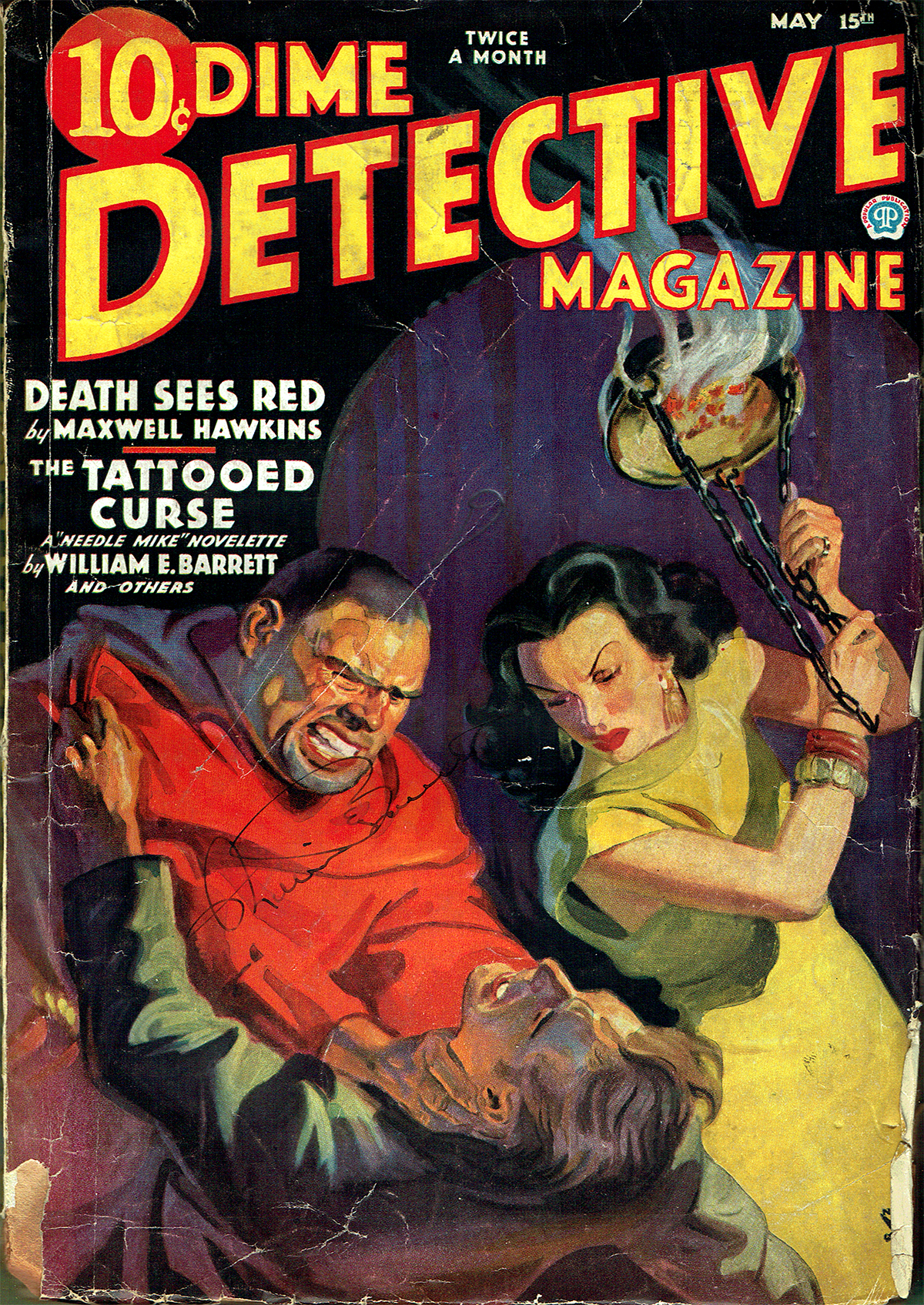
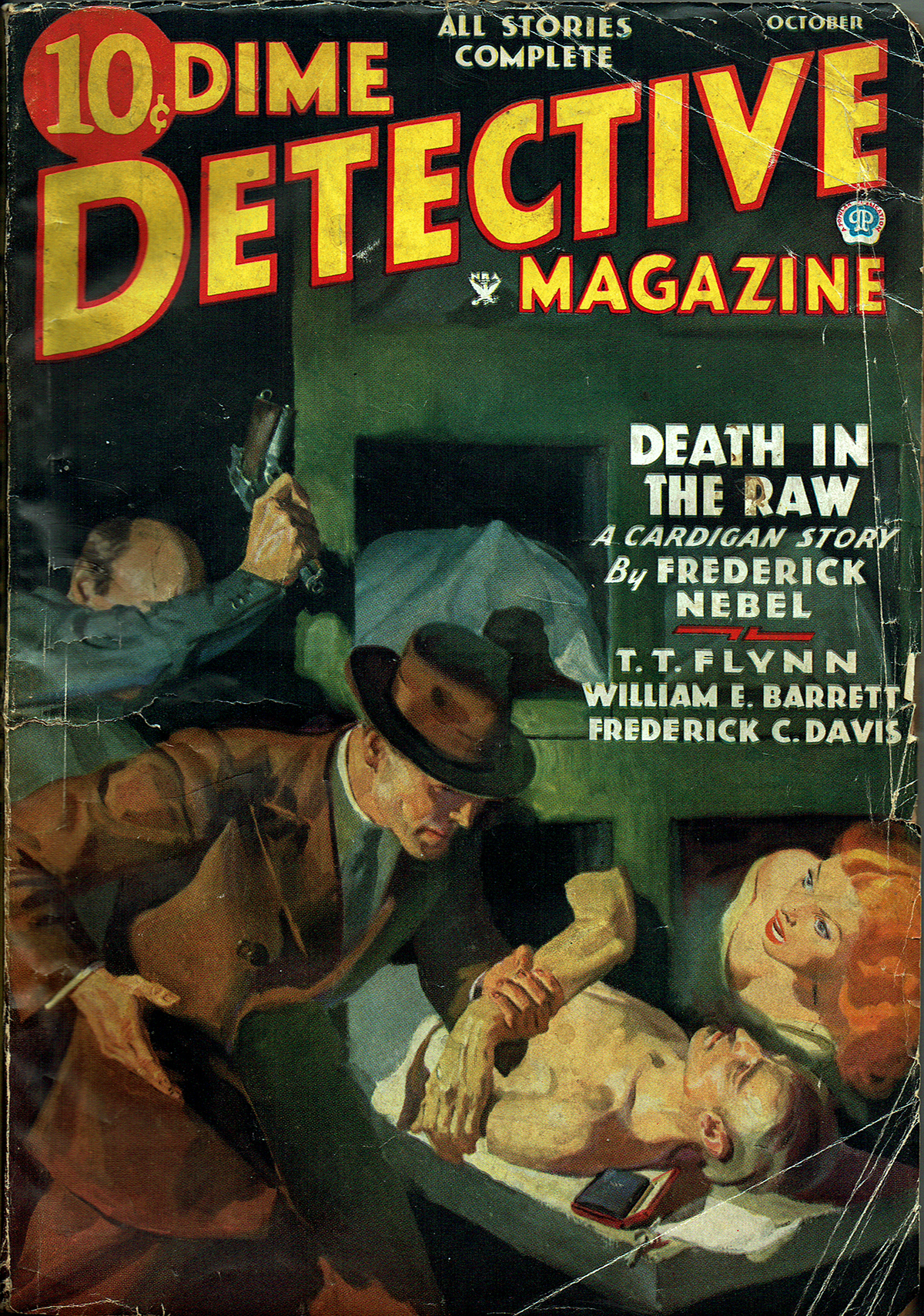

 the City of New York on November 16, 1900. It was snowing like blazes that day, if I remember rightly. Anyway, 1 managed to survive the hazards of Manhattan boyhood until I was sixteen, then, while the native New Yorkers of my age were pouring in from Kansas, Missouri and Minnesota, I followed the family star of destiny to Colorado. I had prepared at Manhattan College Prep in New York for an engineering career, but this proved to be a misdeal and I took a whirl at reporting for a Denver daily. I never progressed past the cub stage and was fervently advised by a harassed city ed. that I never would. After that I became one of the young men who signed the coupon.
the City of New York on November 16, 1900. It was snowing like blazes that day, if I remember rightly. Anyway, 1 managed to survive the hazards of Manhattan boyhood until I was sixteen, then, while the native New Yorkers of my age were pouring in from Kansas, Missouri and Minnesota, I followed the family star of destiny to Colorado. I had prepared at Manhattan College Prep in New York for an engineering career, but this proved to be a misdeal and I took a whirl at reporting for a Denver daily. I never progressed past the cub stage and was fervently advised by a harassed city ed. that I never would. After that I became one of the young men who signed the coupon.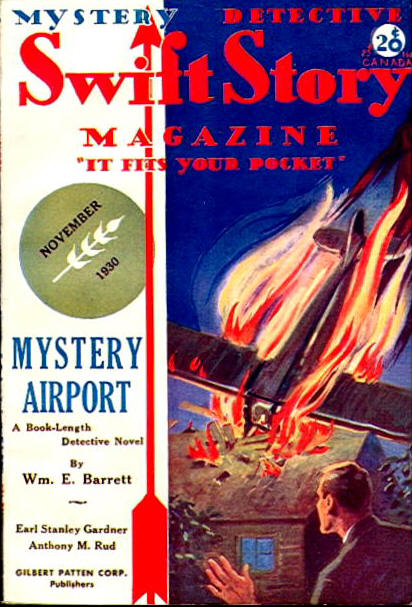 Great thinkers are not lions for courage—thought convinces them of the folly of risk. I am thinking of the men who brought the law to the wilderness in the first place (the same type who will bring it back when it strays). Most of them were men who sought escape from the law some place else— not sticklers for the fine points of the written law, but foursquare for a square deal and for the rights of human beings to live their lives and keep what they have. Derek Dane stands for that and, if he steps outside the statute book to get results, he has fundamental laws to justify him.
Great thinkers are not lions for courage—thought convinces them of the folly of risk. I am thinking of the men who brought the law to the wilderness in the first place (the same type who will bring it back when it strays). Most of them were men who sought escape from the law some place else— not sticklers for the fine points of the written law, but foursquare for a square deal and for the rights of human beings to live their lives and keep what they have. Derek Dane stands for that and, if he steps outside the statute book to get results, he has fundamental laws to justify him.